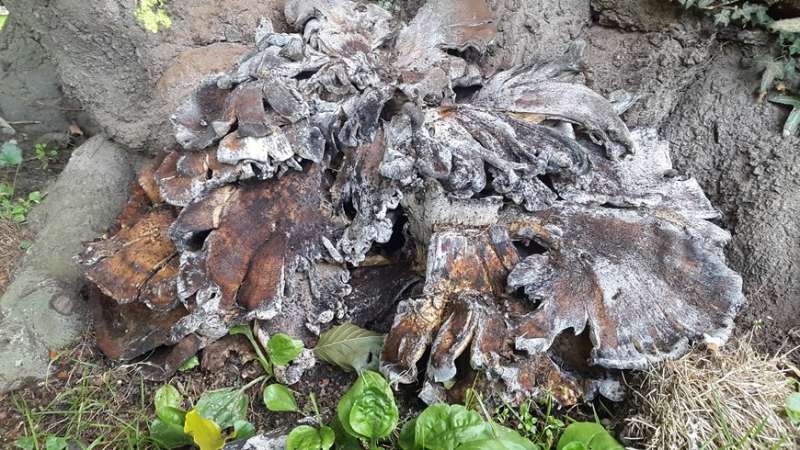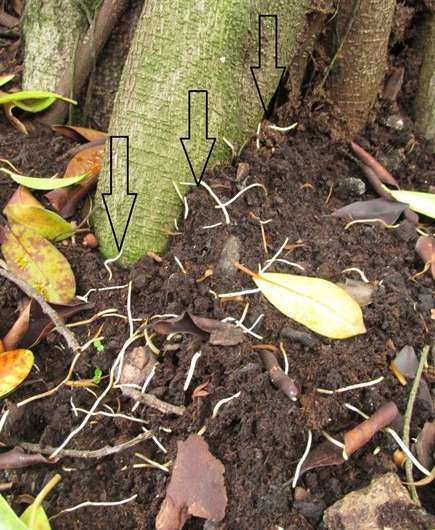New book on fungal diseases of urban trees

Trees can get sick too. In urban areas, this usually means that the infested tree has to be felled for safety reasons. Empa researcher Francis Schwarze is familiar with wood and fungal pathogens and has developed methods to assess trees without damaging procedures and, if necessary, to heal them with selected antagonists. He has now published his knowledge on this topic in a new book.
If a tree is attacked by wood-decomposing fungi, the wood inside the tree is decomposed over a period of many years until in the worst case it falls down. If this happens in the forest, it's usually not a big deal—but it can have devastating effects in urban areas. For this reason, municipal offices are obliged to carry out annual visual inspections on their trees.
If there is a well-founded suspicion of damage—for example, if so-called fungal fruiting bodies are recognizable—an expert examination is necessary. For these analyses, however, diagnostic methods are often used that injure the tree (e.g. drill resistance and sound velocity measurements or a drill core removal). The expert can then measure the extent of wood decomposition. In many cases, however, the wounds caused represent entry points for further fungal infections. Or the fungus can spread faster (from an infested tree).
Cure is possible with early detection
Empa researcher Francis Schwarze uses the knowledge he has gathered over 25 years worldwide to assess the interactions between trees and fungi in a holistic way—and without damaging diagnostic methods. He now makes this knowledge available to all those who are professionally involved in the preservation of trees or are generally interested in the biology of trees and fungi: His book "Diagnose und Prognose der Fäuledynamik in Stadtbäumen" is published this week in German and is not only a valuable guide for the determination of wood-decomposing fungi, but also makes it possible to make long-term predictions about the course of wood decomposition in trees.

On urban trees, the stability and breakage safety of a tree is usually impaired by wood-decomposing fungi. Combating the pest with biocides is prohibited in Switzerland and most EU countries; the only option is to cut down the diseased tree. Also a point where Schwarze can help. Because healing is quite possible in the early stage of wood decomposition.
Fungus against fungus
In his laboratory at Empa in St. Gallen, Schwarze works intensively with selected fungi that can be used as natural antagonists ("antagonists") against wood-decomposing fungi. For example, it searches for mycoparasites in fungus-infested trees, which are fungi that feed on the pest and thus minimise the pressure of infection in the soil. With the result that the tree can form new, healthy roots. Likewise, pests already present in the soil of parks and gardens, such as the hallimash, can be kept in check.
Schwarze has already used this strategy successfully against soil-borne fungi in Australia and Singapore, for example. So-called "Wishing Trees", of which there are only three in Hong Kong, could also be saved thanks to Schwarze know-how. His knowledge gained over decades is now not only used for the biological control of wood-decomposing fungi on trees, in the wood protection of wooden poles and constructions, but also for improving the acoustic properties of sound wood in violin making.


















